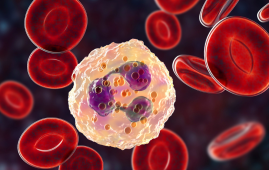

A groundbreaking study has revealed how the brain seamlessly transforms sounds into speech and conversation (speech and language pathways). By analyzing over 100 hours of brain activity during real-life discussions, researchers mapped the intricate neural pathways that enable effortless communication.
This study, conducted by the Hebrew University of Jerusalem in collaboration with Princeton University and NYU Langone, provides unprecedented insights into the mechanics of human conversation. Published in Nature Human Behaviour, the findings could revolutionize speech recognition technology and help develop new treatments for communication disorders.
How the Speech & Language Pathways Study Was Conducted
Data Collection: Researchers used electrocorticography (ECoG) to record brain activity in participants engaged in natural, open-ended conversations.
Advanced Language Processing Models: The study used Whisper, an AI-powered speech-to-text model, to break down conversations into three key levels:
- Simple sounds (phonetics)
- Speech patterns (intonation & structure)
- Word meanings (semantic understanding)
Neural Mapping: By comparing these language layers to real-time brain activity, researchers accurately identified which brain regions handle specific aspects of speech and understanding.
Key Findings: How the Brain Processes Speech & Language
A Step-by-Step Language Flow
- Before speaking: The brain moves from thinking about words → forming sounds → speaking aloud
- After hearing speech: The brain processes sounds → recognizes speech patterns → understands meaning
Real-Time Language Mapping
- The auditory cortex processes sounds
- The motor cortex coordinates speech production
- Higher-level cognitive areas decode word meanings
Improved Accuracy Over Older Models
- Unlike previous studies, this new framework captured language processing more accurately and even predicted brain activity for new conversations not included in the original data.
Implications for Communication & Technology
Potential Breakthroughs in:
- Speech Recognition AI: Enhancing voice assistants like Siri, Alexa, and Google Assistant
- Assistive Devices: Improving brain-computer interfaces for people with speech impairments
- Neuroscience Research: Providing deeper insights into how the brain processes real-world conversations
- Speech Therapy: Helping individuals with language disorders (e.g., aphasia, dyslexia)
Final Thoughts
This study offers a major leap forward in understanding how we process and produce speech. By uncovering the neural pathways behind conversation, researchers are paving the way for advanced AI communication tools and better treatments for speech disorders.
“By connecting different layers of language, we’re uncovering the mechanics behind something we all do naturally—talking and understanding each other.” – Dr. Ariel Goldstein, Lead Researcher.
More Information: A unified acoustic-to-speech-to-language embedding space captures the neural basis of natural language processing in everyday conversations, Nature Human Behaviour (2025). DOI: 10.1038/s41562-025-02105-9
more recommended stories
 Phage Therapy Study Reveals RNA-Based Infection Control
Phage Therapy Study Reveals RNA-Based Infection ControlKey Takeaways (Quick Summary) Researchers uncovered.
 Pelvic Floor Disorders: Treatable Yet Often Ignored
Pelvic Floor Disorders: Treatable Yet Often IgnoredKey Takeaways (Quick Summary) Pelvic floor.
 Urine-Based microRNA Aging Clock Predicts Biological Age
Urine-Based microRNA Aging Clock Predicts Biological AgeKey Takeaways (Quick Summary) Researchers developed.
 Circadian Control of Neutrophils in Myocardial Infarction
Circadian Control of Neutrophils in Myocardial InfarctionKey Takeaways for HCPs Neutrophil activity.
 E-Cigarette Use and Heart Attack Risk in Former Smokers
E-Cigarette Use and Heart Attack Risk in Former SmokersKey Takeaways for Clinicians and Nurses.
 36-Week Pre-eclampsia Screening May Reduce Term Risk
36-Week Pre-eclampsia Screening May Reduce Term RiskA New Preventive Strategy for Term.
 Cardiovascular Risk and Sudden Cardiac Death in Diabetes
Cardiovascular Risk and Sudden Cardiac Death in DiabetesRising Sudden Cardiac Death (SCD) Risk.
 Engineered Herpes Virus for Glioblastoma Immunotherapy
Engineered Herpes Virus for Glioblastoma ImmunotherapyA Powerful New Direction in Glioblastoma.
 Poor Kidney Function and Alzheimer’s Biomarkers Explained
Poor Kidney Function and Alzheimer’s Biomarkers ExplainedPoor kidney function may influence levels.
 Walking Speed Before Hip Replacement Predicts Recovery
Walking Speed Before Hip Replacement Predicts RecoveryNew Evidence Points to a Simple,.

Leave a Comment